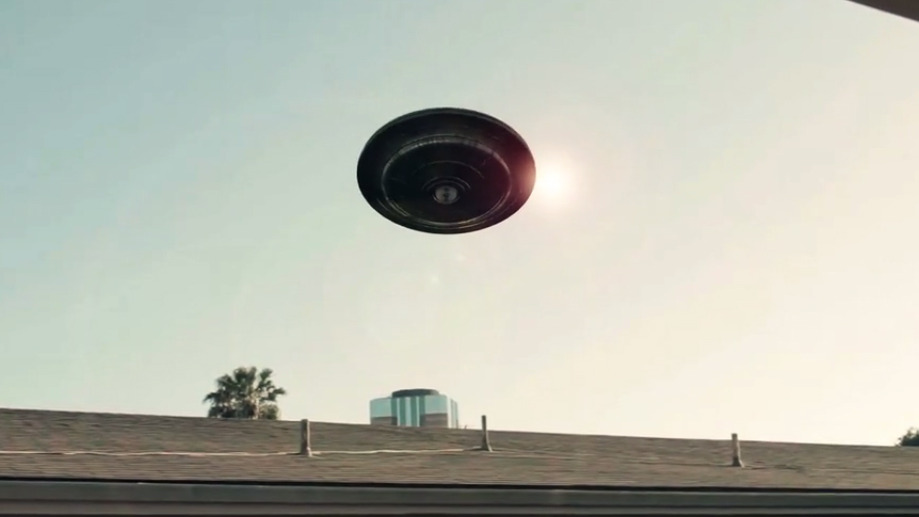Is the universe really a ‘dark forest’ full of hostile aliens in hiding?
Tony Milligan: We have no good reason to believe that aliens have ever contacted Earth. Sure, there are conspiracy theories, and some rather strange reports about harm to cattle, but nothing credible. Physicist Enrico Fermi found this odd.
His formulation of the puzzle, proposed in the 1950s and now known as “the Fermi Paradox”, is still key to the search for extraterrestrial life (Seti) and messaging by sending signals into space (Meti).
The Earth is about 4.5 billion years old, and life is at least 3.5 billion years old. The paradox states that, given the scale of the universe, favourable conditions for life are likely to have occurred many, many times. So where is everyone? We have good reasons to believe that there must be life out there, but nobody has come to call.
This is an issue that the character Ye Wenjie wrestles with in the first episode of Netflix’s 3 Body Problem. Working at a radio observatory, she does finally receive a message from a member of an alien civilisation – telling her they are a pacifist and urging her not to respond to the message or Earth will be attacked.
The series will ultimately offer a detailed, elegant solution to the Fermi Paradox, but we will have to wait until the second season.
Or you can read the second book in Cixin Liu’s series, The Dark Forest. Without spoilers, the explanation set out in the books runs as follows: “The universe is a dark forest. Every civilisation is an armed hunter stalking through the trees like a ghost, gently pushing aside branches that block the path and trying to tread without sound.”
Ultimately, everybody is hiding from everyone else. Differential rates of technological progress make an ongoing balance of power impossible, leaving the most rapidly progressing civilisations in a position to wipe out anyone else.
In this ever-threatening environment, those who play the survival game best are the ones who survive longest. We have joined a game which has been going on before our arrival, and the strategy that everyone has learned is to hide. Nobody who knows the game will be foolish enough to contact anyone – or to respond to a message.
Liu has depicted what he calls “the worst of all possible universes”, continuing a trend within Chinese science fiction. He is not saying that our universe is an actual dark forest, with one survival strategy of silence and predation prevailing everywhere, but that such a universe is possible and interesting.
Liu’s dark forest theory is also sufficiently plausible to have reinforced a trend in the scientific discussion in the west – away from worries about mutual incomprehensibility, and towards concerns about direct threat.
We can see its potential influence in the protocol for what to do on first contact that was proposed in 2020 by the prominent astrobiologists Kelly Smith and John Traphagan. “First, do nothing,” they conclude, because doing something could lead to disaster.
In the case of alien contact, Earth should be notified using pre-established signalling rather than anything improvised, they argue. And we should avoid doing anything that might disclose information about who we are. Defensive behaviour would show our familiarity with conflict, so that would not be a good idea. Returning messages would give away the location of Earth – also a bad idea.
Again, the Smith and Traphagan thought is not that the dark forest theory is correct. Benevolent aliens really could be out there. The thought is simply that first contact would involve a high civilisation-level risk.
This is different from assumptions from a great deal of Russian literature about space of the Soviet era, which suggested that advanced civilisations would necessarily have progressed beyond conflict, and would therefore share a comradely attitude. This no longer seems to be regarded as a plausible guide to protocols for contact.
Misinterpreting Darwin
The interesting thing is that the dark forest theory is almost certainly wrong. Or at least, it is wrong in our universe. It sets up a scenario in which there is a Darwinian process of natural selection, a competition for survival.
Charles Darwin’s account of competition for survival is evidence-based. By contrast, we have absolutely no evidence about alien behaviour, or about competition within or between other civilisations.
This makes for entertaining guesswork rather than good science, even if we accept the idea that natural selection could operate at group level, at the level of civilisations.
Even if you were to assume the universe did operate in accordance with Darwinian evolution, the argument is questionable. No actual forest is like the dark one. They are noisy places where co-evolution occurs.
Creatures evolve together, in mutual interdependence, and not alone. Parasites depend upon hosts, flowers depend upon birds for pollination. Every creature in a forest depends upon insects. Mutual connection does lead to encounters which are nasty, brutish and short, but it also takes other forms. That is how forests in our world work.
Interestingly, Liu acknowledges this interdependence as a counterpoint to the dark forest theory. The viewer, and the reader, are told repeatedly that “in nature, nothing exists alone” – a quote from Rachel Carson’s Silent Spring (1962). This is a text which tells us that bugs can be our friends and not our enemies.
In Liu’s story, this is used to explain why some humans immediately go over to the side of the aliens, and why the urge to make contact is so strong, in spite of all the risks. Ye Wenjie ultimately replies to the alien warning.
The Carson allusions do not reinstate the old Russian idea that aliens will be advanced and therefore comradely. But they do help to paint a more varied and realistic picture than the dark forest theory.











